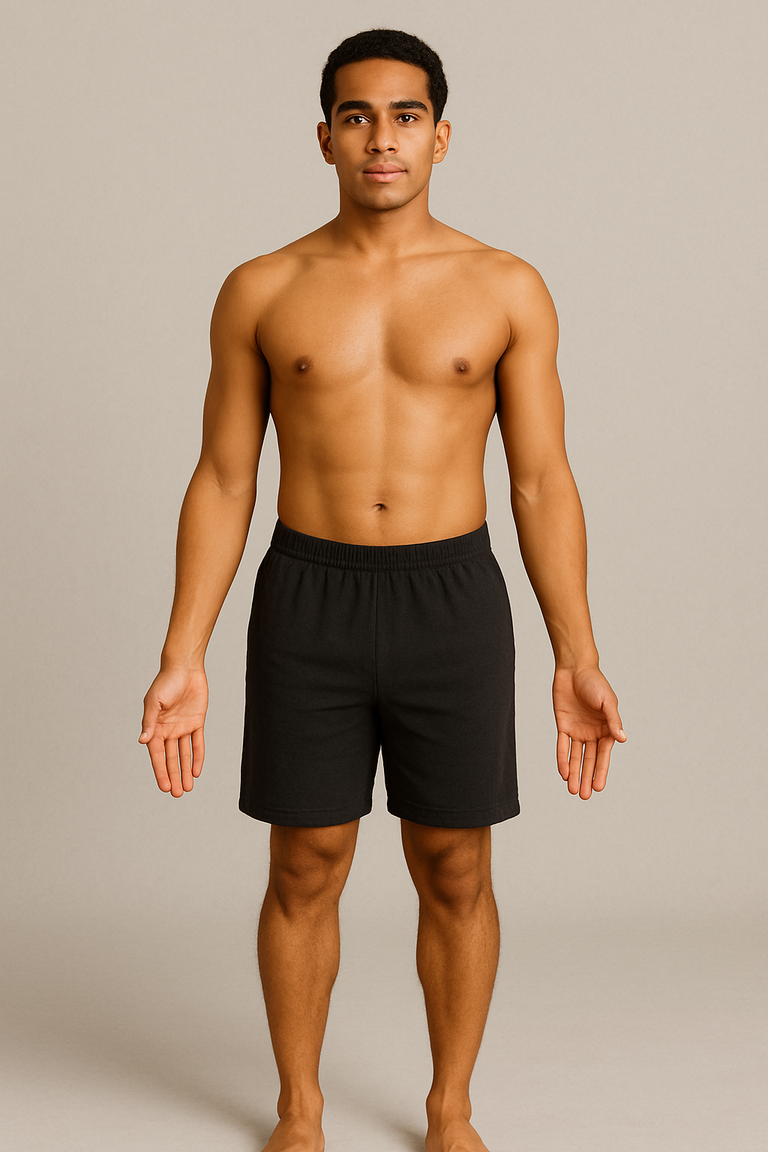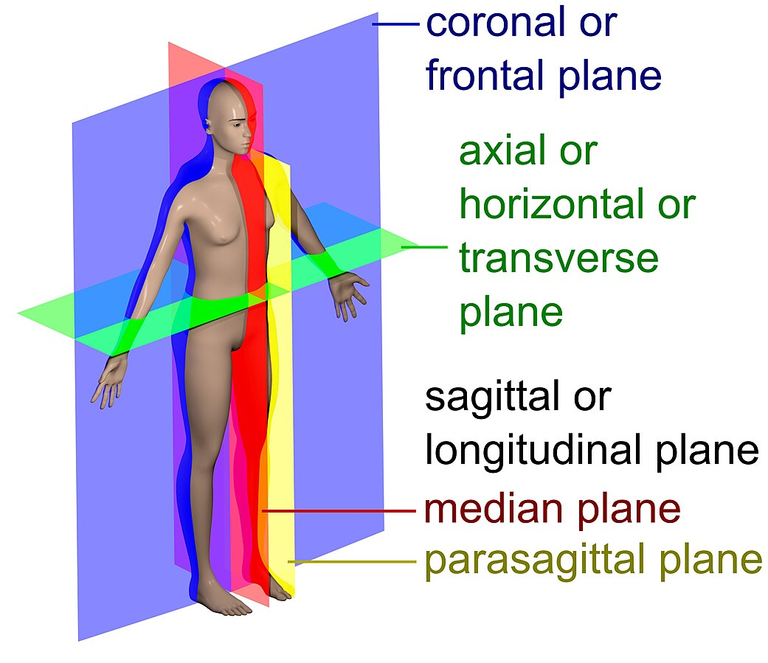How I Finally Understood Planes, Axes, and Why They Matter So Much in Physiotherapy
Good morning, friends, how are you guys doing today? This morning I'm going to share with you what I learned about planes and axes in kinesiology as it relates to physiotherapy. So get ready to add to your knowledge a new thing this morning.
When I was starting as a physiotherapist student, I heard from some of my senior colleagues who used terms like sagittal plane, transverse plane, frontal axis, and so on, but to be honest, they sounded like things that only made sense in textbooks or maybe during exams because I didn't really understand what they meant, and I definitely didn't see how they were connected to the real work of treating patients.
Even my lecturers said that this is the foundation of movement science, but it was still not very clear to me at that time. I still remember clearly the first day an intern tried to teach us this topic during our clinical posting. It was supposed to be a simple teaching session, but I was totally lost. It just wasn’t ringing any bell in my head. The intern even used several demonstrations and examples, trying to make it easy for us, but it didn’t help me at the time. I couldn’t even give him a single example of a joint and the plane of its movement. I remember standing there, hoping the session would be over quickly. That day, I honestly felt confused and maybe even a bit embarrassed. But I thank God now that after taking the time to go back and study it on my own, the whole thing has started to make sense. Things are finally clicking.
But I'm glad today, after spending time with this topic in kinesiology, that I see things differently.
Allow me to take you along on the journey that helped me to understand clearly in a way I believe that every physiotherapy student, especially those struggling with this part, can relate to.
First of all, let's discuss what anatomical position is. Anatomical position is like the starting point of everything when we talk about human movement or structure. If you see a picture of someone standing straight, looking forward, with their arms by their side and their palms facing out, then that is the anatomical position.

Image Created with Chatgpt. Anatomical Position
This position helps us to describe every part of our body and how to move using a standard reference. I could remember how I used to forget how the hand moves and the appropriate terms used to describe the movements. But I learned about anatomical position during my third year, and now I see how this knowledge is shaping my understanding of kinesiology.
To continue with our discussion, let's say someone raises their hands forward or bends down. How do we describe that movement? That is where the idea of a body plane comes in. In this case our body can be imagined as being divided into different sections called planes. It is almost like slicing a bread in three different directions. And each direction gives us a different way of looking at the movements that occur in the body.
One of these directions is known as the sagittal plane, which divides the body into left and right halves. The movement that occurs in this direction is forward and backward, like working or bending to pick something.

source:https://commons.wikimedia.org/wiki/File:Human_anatomy_planes,_labeled
Another direction is the frontal plane, which divides the body into front and back. Imagine when someone lifts their arms to their side or does a side stretch; they are moving in this plane. The last one is what we call the transverse plane, which splits the body into top and bottom halves. If you talk about movements like twisting your body or turning your head from one side to another, then you should know that this movement is taking place in the transverse plane.
Another important thing to look at is what we call the axis. Now, along with the plane, this axis tends to play important roles in movement. An axis is like an invisible rod that movement happens around. Hence each plane has a corresponding axis. Take, for instance, when you move in a sagittal plane, the movement happens around a frontal axis. When you move in the frontal plane, the axis is sagittal. And when movement happens or occurs in the transverse plane, it happens around the vertical axis.
I know this might sound like a lot to you this time you're hearing it first, but when I started thinking of everyday actions like walking, turning, or stretching, it all began to make sense to me. I would watch someone lifting their arm, and I would say to myself, “that's movement in the frontal plane”. This makes it become more real due to this connection.
Next, you might be wondering why all this matters in physiotherapy. To be honest with you at first, I thought that this topic was one of those theories we had to memorize. But truly now I realized that this knowledge is part of our course skill. If I am working with a patient and I want to describe how they are moving or I want to document something clearly in their case file, I can't just say, “He moved his arm.” I need to say something like “shoulder flexion in the sagittal plane.” Because that is how professionals communicate to avoid confusions. And to show that I understand what I'm doing.
Another thing I have come to appreciate is how it helps us notice abnormal movement. Take for instance, if someone is working but rotating their trunk too much or if some side of the body doesn't move as freely as the others, I can quickly link it to the plane or axis involved and start thinking of ways to help.
Even when working in a team with doctors, surgeons, or other therapists, using these proper terms makes communications smooth and clear. We are all speaking the same professional language.
In addition, it is very important to understand that the anatomical position and body parts in relation to what I have said above help me to describe injuries and progress better. I may say that the wrist is below the elbow joint or that the knee is above the ankle joint, and it is all based on this reference position.
So guys, I am glad after reading this topic today, and I can see how far I have come with the topic. And I feel more connected to my studies. Kinesiology is no longer abstract for me, even though this is not the only important topic in the subject. But I see how this knowledge of plane axis and body positioning is not just theory but the very foundation of what we do in the clinics.
I want you to know that physiotherapy is not just about exercises and massage but is about understanding human movement in its purest form.
And that's how it finally clicked for me. Thank you for reading this article. And I really appreciate your support.
References
- KINESIOLOGY: THE SKELETAL SYSTEM AND MUSCLE FUNCTION, THIRD EDITION,By Joseph E. Muscolino, DC. ISBN: 978-0-323-39620-2.


Congratulations @jsalvage! You have completed the following achievement on the Hive blockchain And have been rewarded with New badge(s)
Your next target is to reach 650 posts.
You can view your badges on your board and compare yourself to others in the Ranking
If you no longer want to receive notifications, reply to this comment with the word
STOPCheck out our last posts:
Dear @jsalvage !
James!
Do you want to work in a hospital as a physical therapist?
Yes , that's what I'm working on already
James!
Do you know about The day of power up?
What is that?
Yes, I know about it..I think it normally happens on the last day of the months or so. That day, you'll need to make a post about how you powered some hives up in your account.
Then whales or people who are in charge of this event (hive power up) will support the post you have made concerning your power up..
James!
Do you know how to use The day of power up?
What benefits can The day of power up give me?
Thanks for your contribution to the STEMsocial community. Feel free to join us on discord to get to know the rest of us!
Please consider delegating to the @stemsocial account (85% of the curation rewards are returned).
Consider setting @stemsocial as a beneficiary of this post's rewards if you would like to support the community and contribute to its mission of promoting science and education on Hive.